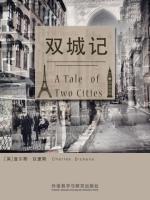comment
I 'd like to make comments on a munber of well-known words as follows:
1. It was the best of times, it was the worst of times, it was the age of wisdom, it was the age of foolishness, it was the epoch of belief, it was the epoch of incredulity, it was the season of Light, it was the season of Darkness, it was the spring of hope, it was the winter of despair, we had everything before us, we had nothing before us, we were all going direct to Heaven, we were all going direct the other way. . . .
These famous words, which open A Tale of Two Cities, hint at the novel’s central tension between love and family, on the one hand, and oppression and hatred, on the other. The passage makes marked use of anaphora, the repetition of a phrase at the beginning of consecutive clauses—for example, “it was the age . . . it was the age” and “it was the epoch . . . it was the epoch. . . .” This technique, along with the passage’s steady rhythm, suggests that good and evil, wisdom and folly, and light and darkness stand equally matched in their struggle. The opposing pairs in this passage also initiate one of the novel’s most prominent motifs and structural figures—that of doubles, including London and Paris, Sydney Carton and Charles Darnay, Miss Pross and Madame Defarge, and Lucie and Madame Defarge.
2.The wine was red wine, and had stained the ground of the narrow street in the suburb of Saint Antoine, in Paris, where it was spilled. It had stained many hands, too, and many faces, and many naked feet, and many wooden shoes. The hands of the man who sawed the wood, left red marks on the billets; and the forehead of the woman who nursed her baby, was stained with the stain of the old rag she wound about her head again. Those who had been greedy with the staves of the cask, had acquired a tigerish smear about the mouth; and one tall joker so besmirched, his head more out of a long squalid bag of a night-cap than in it, scrawled upon a wall with his finger dipped in muddy wine-lees—blood.
This passage, taken from Book the First, Chapter 5, describes the scramble after a wine cask breaks outside Defarge’s wine shop. This episode opens the novel’s examination of Paris and acts as a potent depiction of the peasants’ hunger. These oppressed individuals are not only physically starved—and thus willing to slurp wine from the city streets—but are also hungry for a new world order, for justice and freedom from misery. In this passage, Dickens foreshadows the lengths to which the peasants’ desperation will take them. This scene is echoed later in the novel when the revolutionaries—now similarly smeared with red, but the red of blood—gather around the grindstone to sharpen their weapons. The emphasis here on the idea of staining, as well as the scrawling of the word blood, furthers this connection, as does the appearance of the wood-sawyer, who later scares Lucie with his mock guillotine in Book the Third, Chapter 5. Additionally, the image of the wine lapping against naked feet anticipates the final showdown between Miss Pross and Madame Defarge in Book the Third, Chapter 14: “The basin fell to the ground broken, and the water flowed to the feet of Madame Defarge. By strange stern ways, and through much staining of blood, those feet had come to meet that water.”
3. I see a beautiful city and a brilliant people rising from this abyss, and, in their struggles to be truly free, in their triumphs and defeats, through long years to come, I see the evil of this time and of the previous time of which this is the natural birth, gradually making expiation for itself and wearing out. . . .
I see that child who lay upon her bosom and who bore my name, a man winning his way up in that path of life which once was mine. I see him winning it so well, that my name is made illustrious there by the light of his. . . .
It is a far, far better thing that I do, than I have ever done; it is a far, far better rest I go to than I have ever known.
Though much debate has arisen regarding the value and meaning of Sydney Carton’s sacrifice at the end of the novel, the surest key to interpretation rests in the thoughts contained in this passage, which the narrator attributes to Carton as he awaits his sacrificial death. This passage, which occurs in the final chapter, intorduce
two points: one personal, the other national. In a novel that seeks to examine the nature of revolution—the overturning of one way of life for another—the struggles of France and of Sydney Carton mirror each other. Here, Dickens articulates the outcome of those struggles: just as Paris will “ris[e] from [the] abyss” of the French Revolution’s chaotic and bloody violence, so too will Carton be reborn into glory after a virtually wasted life. In the prophecy that Paris will become “a beautiful city” and that Carton’s name will be “made illustrious,” the reader sees evidence of Dickens’s faith in the essential goodness of humankind. The very last thoughts attributed to Carton, in their poetic use of repetition, register this faith as a calm and soothing certainty.



 京公网安备 11010802032529号
京公网安备 11010802032529号